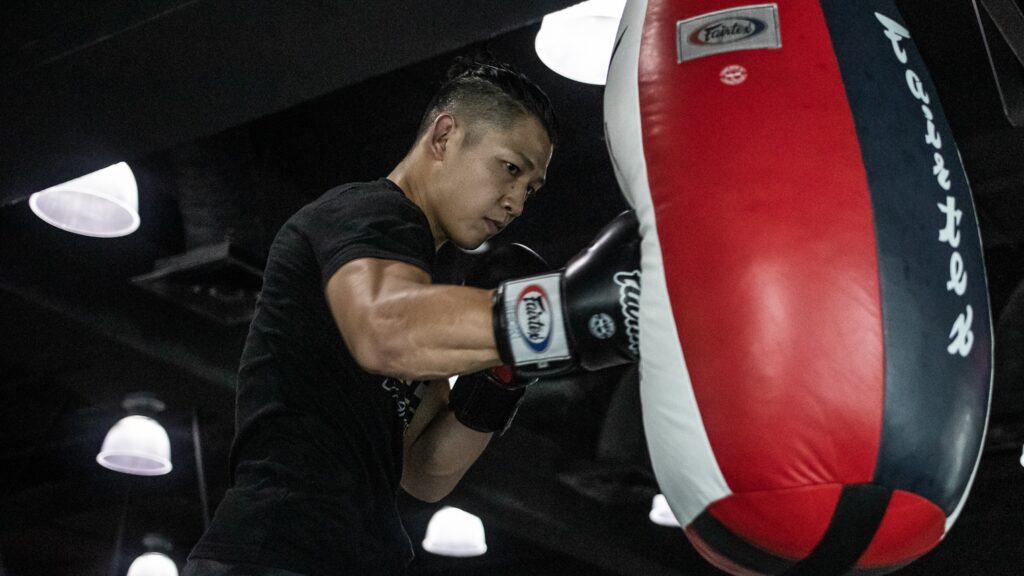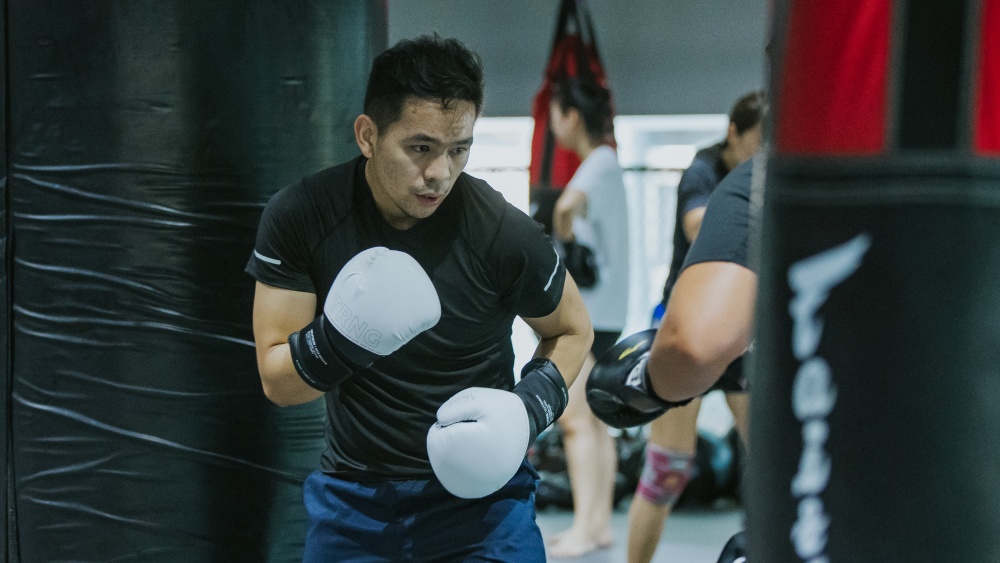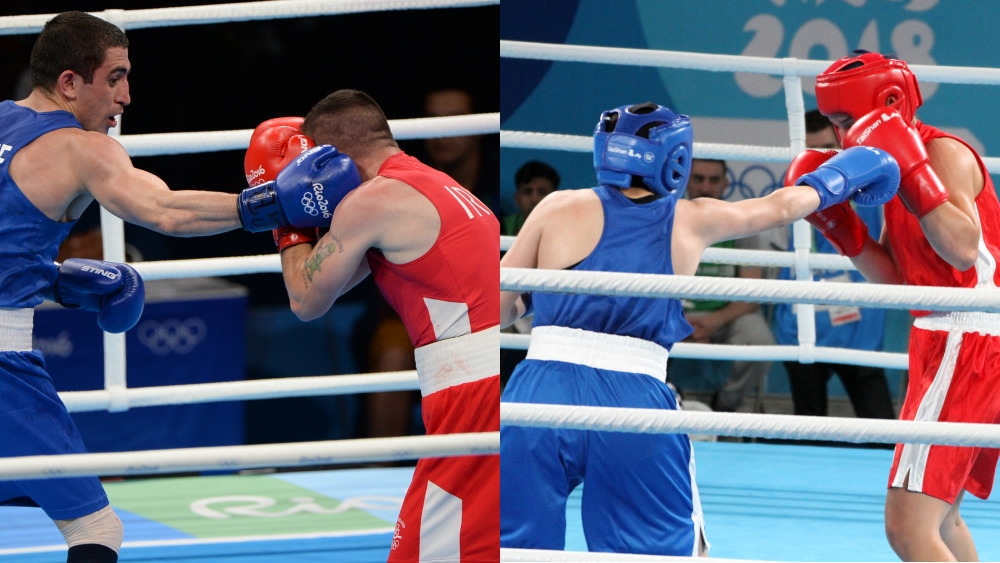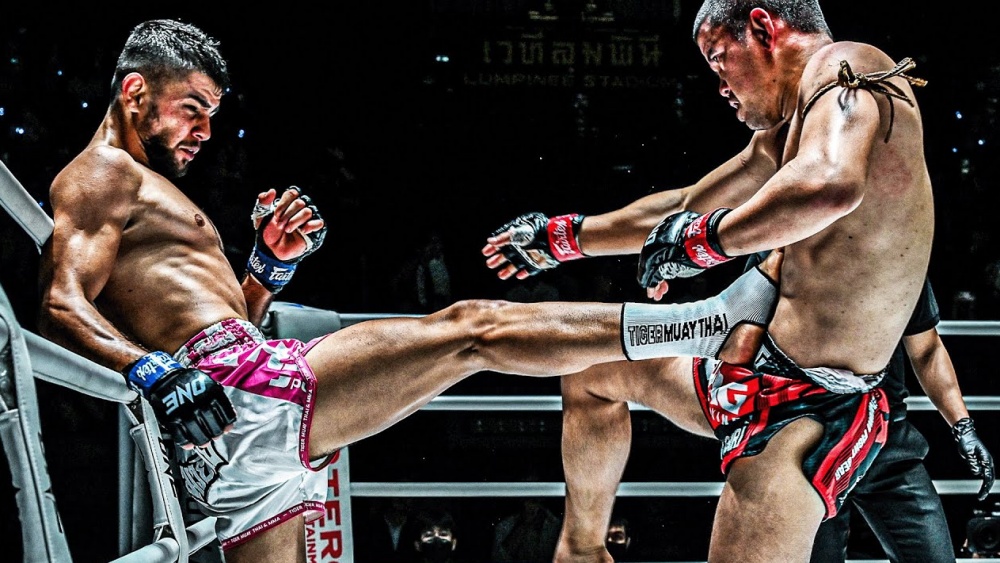The uppercut is one of the most devastating punches in boxing. It’s also one of the hardest to execute technically and perhaps the most difficult punch to land. It requires equal amounts of speed, precision, and timing to connect an uppercut.
It’s a power punch that is thrown from the waist in an upward motion, targeting either an opponent’s chin, or on various locations on the body such as the kidney, liver, and solar plexus. Uppercuts are most commonly used when in-fighting, and are rarely used from range as it diminishes in power and carries with it some risk.
There are a variety of different uppercut techniques that you can add to your game, for use in multiple scenarios. It is most effective as part of combination punching, and when opponents are unable to anticipate it.
Some of the greatest fighters in boxing history have employed powerful uppercuts, such as Mike Tyson, Roy Jones Jr., George Foreman, Larry Holmes, and Lennox Lewis, to name a few.
If you’re looking to add this incredible offensive attack to your game, we’ve got you covered. Today, Evolve Daily shares tips on how to land the perfect uppercut.
1) Advantages And Disadvantages Of The Uppercut
As great as the uppercut is as a punch, there are a few things you have to know about it to truly understand how to use it, and how to defend against it. There are a great many advantages and disadvantages to using uppercuts, and we’ve listed them down here. Let’s take a look.
Advantages
-
One of the most powerful punches you can throw in boxing
-
It has instant knockout power if an opponent doesn’t see it coming
-
It’s very hard to defend against if part of a combination
-
Upward motion uses different muscle configurations from other punches, resulting in less fatigue
Disadvantages
-
It saps energy if you miss badly and can leave you off balance
-
Leaves you open to getting countered as it temporarily requires you to drop your guard
-
Needs proper setup as it is easily telegraphed if thrown solo
-
Close range use-case scenarios only, can’t throw from range
2) How To Execute Different Kinds Of Uppercuts
The first step to throwing an uppercut is to understand how to properly execute one. The uppercut has many technical nuances, and requires a great deal of practice and repetition to perfect. Furthermore, there are many different variations to the uppercut, each with its own set of rules.
Rear Uppercut
This is the most common of the uppercut variations, and one that is used the most frequently in combinations or otherwise. As the name suggests, this uppercut is thrown with the rear hand, which is usually the power hand. Common setup punches include the jab and the hook. Although it is usually initiated in an offensive sequence, the rear uppercut can also be used as a counterpunch. When throwing this punch, remember to use your opposite hand to guard your chin to defend against retaliation.
Lead Uppercut
It carries a lot of risk because, without a proper setup, it can be easily telegraphed if not thrown with enough speed. Leading with the uppercut is uncommon, but can be effective if you know how to do it correctly. To execute this punch, dip your head to the outside of your lead foot and lean slightly outward. This will give the uppercut emphasis and added power. Legendary Hall-of-Fame trainer Freddie Roach is against using the lead uppercut, but many fighters have also used it effectively.
Counter Lead Uppercut
Using the uppercut as a counterpunch is one of the safest ways to use it, as the punch is executed in reaction to an opponent’s offense, rather than in an offensive set. Because it is thrown as an opponent is coming in (and vulnerable himself), the uppercut’s power is amplified. Also, as a counter, the risk of you getting hit even after you miss with the uppercut is greatly reduced.
Body Uppercut
Uppercuts to the body are arguably the most effective way to use an uppercut in a fight. A crushing blow to the solar plexus, the ribs, or the kidney and liver can cause opponents to crumple to the canvas in pain. It can instantly knock the wind out of an opponent’s sails, and render them motionless. Body uppercuts are short and thrown in close range, which means they are quicker to reach the target. It can be executed as an offense initiator, or as a counter after you’ve ducked under an opponent’s punch.
3) Uppercut Do’s And Don’ts
As with every technique, there are things that you should be doing, and things you shouldn’t. It’s the same with the uppercut. Here are some essential tips you should follow to get the most out of your uppercuts.
Do’s:
-
Always keep your guard up and defend yourself. Since uppercuts leave you open and vulnerable, especially if you miss, it’s important that you’re constantly aware of your off-hand. Have it guard your chin when throwing the uppercut.
-
Transfer power properly through the base. Like with all punches in boxing, power is generated in the legs, transferred through the core, all the way to the fist. So bend your knees slightly, rotate your torso, and throw the uppercut from the waist.
-
Attack the body as well as the head. Mix it up, and you will get the best results.
-
Remember to always move your head. The constant head movement makes it difficult for opponents to read your next move, especially if you plan to throw the uppercut.
-
Set your uppercuts up with jabs and hooks. You can throw a lead uppercut here and there, but do so sparingly.
-
Practice makes perfect. Work on the heavy bag, or if your gym has one, the uppercut bag. Training and honing your skills is the best way to perfect them. Then apply them in sparring.
Don’ts:
-
Don’t make a habit of keeping your uppercut hand down after you throw it. Bring your guard back after throwing the uppercut.
-
Don’t reach in on the uppercut. Overextending yourself on your punches will leave you open to counters. It will also cause you to go off balance. For uppercuts, try not to throw them too far out of range. Uppercuts are meant to be thrown from close range.
-
Don’t leave your chin exposed at any time. Throwing the uppercut is the riskiest punch in boxing because it leaves you so wide open. Tuck your chin in and grit your teeth. Most important of all, defend yourself at all times.
If you want to learn boxing in Singapore from World Champions, sign up for a trial class today at Evolve MMA!
Book your complimentary trial class with our World Champions below!
If you have any other questions regarding Evolve MMA and the programs we offer, you can get in touch with our membership executives at the following locations:
Evolve MMA (Far East Square)
26 China Street
Far East Square #01-01
Singapore 049568
Phone: (65) 6536 4525
Evolve MMA (Orchard Central)
181 Orchard Road
#06-01 Orchard Central
Singapore 238896
Phone: (65) 6536 4556
Evolve MMA (KINEX)
11 Tanjong Katong Road
#02-52 KINEX
Singapore 437157
Phone: (65) 6288 2293
Evolve MMA (Clarke Quay Central)
6 Eu Tong Sen Street
#04-18 Clarke Quay Central
Singapore 059817
Phone: (65) 6226 2150

















